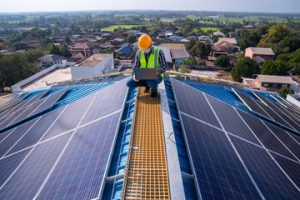Paul’s Rubbish Removal and Demolition are closely tied to how cities grow and evolve. Each project begins with a simple goal of clearing space, but the details go far beyond that first impression. It is not just about knocking down walls or hauling away debris. It is about reshaping spaces while reducing impact on the environment.

Every demolition generates materials that need careful sorting. Some items can be recycled, others must be handled with extra caution. Proper rubbish removal ensures these materials do not simply pile up in landfills. Instead, they are redirected into streams where they can have new life.
Modern demolition now integrates recycling at its core. Concrete, steel, and timber are separated to reenter production cycles. This reduces waste while saving on raw materials. It transforms what was once discarded into valuable assets.
Rubbish removal is more than the final sweep of debris. It is a system of logistics that demands coordination and planning. Vehicles, trained teams, and specialized tools all come together. The efficiency of this process determines both cost and safety.
Dust and noise are unavoidable during demolition. However, controlled techniques are changing how the process is perceived. Water sprays reduce airborne particles, while staged demolitions minimize disruption. These steps make rubbish removal safer for both workers and nearby communities.
The scale of demolition varies from small structures to large complexes. Each requires its own tailored approach to rubbish removal. A house may take a few days to clear, while a factory could take weeks or months. Time and safety always remain the guiding factors.
Technology is reshaping the field in new ways. Robotic demolition tools now allow precision in dangerous areas. Remote-controlled machinery can dismantle walls without risking human lives. These innovations highlight how safety is becoming a priority.
Rubbish removal also benefits from digital systems. Tracking software monitors waste streams and ensures compliance with regulations. This transparency helps keep projects accountable. It also reassures communities that disposal is handled responsibly.
The environmental role of rubbish removal cannot be overstated. Every ton diverted from landfill reduces greenhouse emissions. When materials are reused, the demand for mining and extraction decreases. This closes the loop and fosters a sustainable cycle.
Demolition is sometimes emotional for communities. Old buildings may hold memories even if they no longer serve purpose. Rubbish removal in such contexts becomes a sensitive act. It is not just removal but transformation, allowing new beginnings to take shape.
Economic growth is often tied to demolition and rubbish removal. Clearing outdated spaces makes way for modern developments. This in turn creates opportunities for jobs and local economies. The cycle is both physical and financial.
Safety is at the heart of every demolition project. Trained crews follow strict procedures to avoid accidents. Rubbish removal must also consider hazardous materials like asbestos. Handling such risks requires specialized knowledge and protective equipment.
Community health is equally important. Poorly managed demolition can leave dust and debris in neighborhoods. Proper rubbish removal prevents these impacts. It ensures residents are not burdened by the consequences of construction.
Innovations in waste-to-energy are also shaping the future. Certain materials from demolition can be converted into usable power. This reduces landfill waste while generating electricity. It demonstrates how rubbish removal can directly contribute to sustainability.
Urban areas constantly face the need to balance growth and preservation. Demolition is sometimes necessary, but careful rubbish removal softens its impact. By reusing materials and reducing hazards, the process becomes more ethical. It shows that development and responsibility can coexist.
Skilled labor is a foundation of this industry. Workers need training in handling debris, operating machinery, and ensuring safety. Without this expertise, rubbish removal can become chaotic and dangerous. Professional skill keeps projects efficient and secure.
The psychology of space also plays a role. Demolished areas may feel empty at first. Yet rubbish removal prepares the ground for something fresh. It transforms ruins into clean slates where possibilities can unfold.
The timing of rubbish removal often determines overall project success. Quick and efficient clearance means new construction can begin sooner. Delays in debris management can stall entire projects. This makes rubbish removal a central factor in progress.
Cultural awareness adds another layer. Some structures may contain historical or artistic elements worth preserving. In such cases, demolition teams coordinate with preservationists. Rubbish removal becomes selective, ensuring valuable fragments are not lost.
Environmental regulations guide how rubbish is processed. Ignoring them leads to penalties and long-term damage. Responsible demolition and waste removal align with these standards. This ensures projects not only succeed but remain legally sound.
Smaller projects highlight the everyday importance of rubbish removal. Renovations, extensions, and landscaping also generate waste. Demolition is not always large-scale, but the principles remain the same. Efficient clearance is essential at every level.
Noise reduction is another modern focus. Specialized machinery and staged processes help reduce sound pollution. This makes rubbish removal less disruptive in urban areas. Communities benefit from these quieter approaches.
Rubbish removal plays into broader sustainability goals. Circular economy principles encourage reuse of demolition waste. Instead of linear disposal, the cycle becomes regenerative. It brings long-term value to industries and the environment alike.
Innovation in demolition continues to advance. Deconstruction, where buildings are carefully dismantled, is gaining traction. Instead of mass destruction, this method prioritizes material recovery. Rubbish removal in this context becomes highly precise.
Training and education ensure that the industry evolves. New practices are constantly introduced to reduce risks and increase efficiency. Workers learn advanced safety measures and eco-friendly disposal methods. The result is a better-equipped workforce for future demands.
Technology also connects demolition with data. Sensors can monitor structural integrity during dismantling. This information helps guide safe removal and efficient debris handling. It is another way rubbish removal is becoming smarter.
Demolition is often misunderstood as destructive. In truth, it clears the way for regeneration. Rubbish removal ensures that destruction is followed by order. It turns chaos into organized renewal.
Climate change makes waste management even more critical. Rising awareness of carbon footprints demands greener practices. Rubbish removal with recycling and reuse helps meet these goals. Demolition becomes part of climate solutions rather than the problem.
Different materials create unique challenges. Metals require different handling from timber or concrete. Hazardous materials demand protective protocols. Rubbish removal adapts to each type with tailored solutions.
Economic costs are directly tied to rubbish removal efficiency. Poor management increases expenses and prolongs projects. Streamlined removal keeps budgets under control. It benefits both contractors and communities.
Some projects involve partial demolition. Only certain parts of a structure are removed. Rubbish removal in these cases requires precision and care. It prevents damage to sections that are meant to remain intact.
Collaboration is essential in this field. Engineers, architects, and waste specialists work together. Their combined expertise ensures demolition is safe and rubbish removal is effective. No project succeeds without this cooperation.
Changing attitudes about waste are influencing the industry. People are demanding more sustainable practices. Rubbish removal responds by prioritizing recycling and responsible disposal. This shift reflects evolving values in society.
Even large-scale demolitions have human stories. Workers bring skill, communities watch with interest, and future occupants wait for results. Rubbish removal is the link that ties these perspectives together. It carries away the old while making room for the new.
Innovation will continue to define rubbish removal and demolition. Smarter machines, better recycling methods, and sustainable goals will lead the way. What was once simple debris management is now a vital industry. Its future is as important as the structures it clears.
